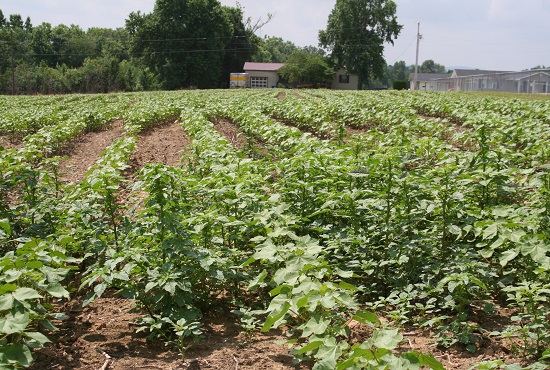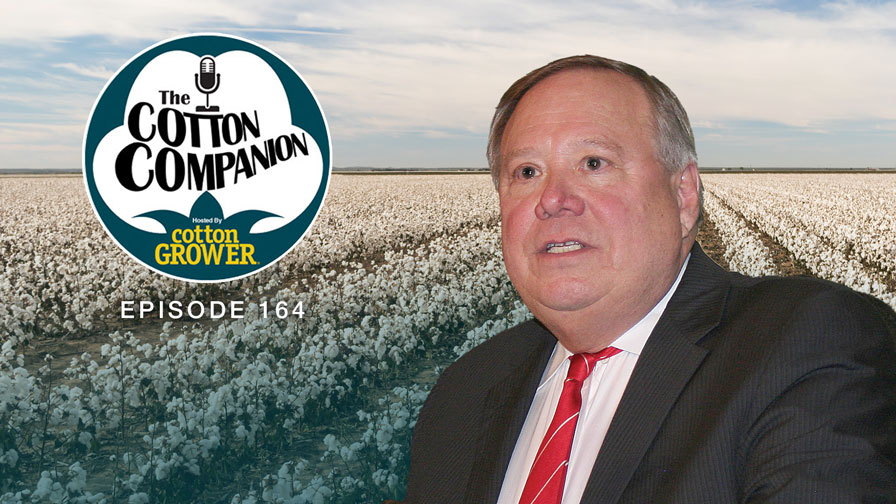PGR Considerations for Texas
The use of plant growth regulators (PGRs) in cotton is sometimes like reinventing the wheel on an annual basis. However, it should not be that difficult or confusing if you understand what PGRs CAN and CANNOT do. I have heard PGRs referred to as:
- “Sunlight/heat units in a jug”
- “Stress in a can”
- “A jug of PGR is best used as a door stop”
- “PGRs help balance vegetative and reproductive growth”
- “PGRs helps tip the balance towards reproductive growth”
- “Using PGR’s is like riding the brakes when the accelerator is stuck wide open on irrigation and fertility”
- “PGRs make everything better just like bacon!”
PGRs are Mepiquat-based (Pix Plus, Mepex, Mepichlor, Mepiquat Chloride, Mepex GinOut, Stance, and others). PGRs have been available for many years, coming of age in the late 80’s. Dr. James Supak did much of the original work here. Companies are constantly enhancing formulations. The main active ingredient in nearly all these products is mepiquat chloride.
What can PGRs do and not do?
- Mepiquat chloride (MC) reduces production of gibberellic acid in plant cells that in turn reduces cell expansion, ultimately resulting in shorter internode length.
- MC will not help the plants compensate for earlier weather or disease damage.
- It does not increase growth rate but essentially reduces plant size by reducing cellular expansion.
- It may, under good growing conditions, increase fruit retention, control growth, and promote earliness.
Mepiquat chloride should not be applied if crop is under any stresses including moisture; weather; severe spider mite, insect, or nematode damage; disease stress; herbicide injury including herbicide damage (for example 2,4-D, dicamba, etc.) due to drift or from tank contamination; or fertility stress.
Original MC, like Pix, basically simulated a stress on the plant, which in turn can result in the natural response of reproductive growth. Back then, the stress from the MC combined with other natural stresses could result in fruit loss/shed, particularly at rates above 8 ounces. More recently, Boron/borate helps soften this MC stress.
Results from replicated testing indicates that a 5% to 20% reduction in plant height (compared to the control) can be obtained from 16 ounces of 4.2% a.i. MC material applied in up to four sequential 4-oz/acre applications starting at match head square (MHS) and ending at early bloom.
It is generally possible to reduce about one node from the growth of the main stem, which can result in about 3-5 days earlier cutout. Low-rate multiple applications beginning at MHS have generally provided more growth control than later higher rate applications made at first bloom or later.
Research trials have shown that statistically significant increases in yields are not generally obtained, but excellent growth control is consistently provided. Many times, we do not see a lot of differences in performance of these products with respect to growth control.
Consistent yield increases have not been observed from any of the MC materials we have investigated. A good boll load will normally help control plant growth. Fields with poor early-season fruit retention, excellent soil moisture, and high nitrogen fertility status may be candidates for poor vegetative/fruiting balance and should be watched carefully.
Growers who have planted varieties with vigorous growth potential and have fields with excellent growing conditions may need to consider PGR application.
Determination of application rates is generally more “art” than “science” for these products. Applications should begin when 50% of the plants have one or more matchhead squares (see specific product label for more information). FYI, most MC products have a maximum of 48 oz/ac per season (22 oz on Stance).
It is best to manage high growth potential early if conditions favor excessive growth for an extended period of time. Here is the dilemma: it is unknown at that early period of time as to how weather will affect the crop in July and into August.
If 100+ degree temperatures with southwest winds at 30 mph and 10% relative humidity are encountered, those conditions will limit plant growth in many fields with low irrigation capacity.
Watch high growth potential varieties and fruit retention. If a high growth potential variety has been planted and has low fruit retention, then MC rate should begin early and be increased, especially under high water, fertility, and good growth conditions.
My Recommendations for Cotton PGRs:
- On varieties which are known to have vigorous growth patterns, start at pinhead square with 4-8 oz of MC (Pentia something which has boron). Watch compatibility.
- Seven-to-10 days later, add another 4-8 oz of MC.
- Have a total of 16 oz of MC prior to first bloom by applying low multiple applications.
- Then, as plant responds to irrigation, rain, fertility, H.U., apply MC as needed.
- Under normal conditions, I usually recommend a 16 oz MC (Pentia) application at peak bloom (5 NAWF) on vigorous varieties.








